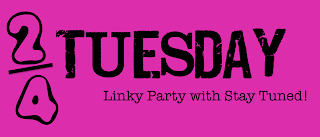Well, It's beginning to look a lot like Christmas around here! I have been enjoying the week off with my family, I hope you have had a great Thanksgiving holiday.
I have been teaching for many years and it's amazing to see what we can do with technology these days. Honestly, the first school I taught at had just a couple of computers in the library for student use, I would handwrite my lesson plans in a spiral notebook, (color coded by grade-level,) and I created rhythm, melody, and lyric reading pages on butcher paper. Now I have SMARTBoard files, PowerPoints, Sibelius notated songs, and iMovies I can use with my students. We've come a long way, baby!
I recently created a PDF slideshow for my second graders to practice reading half note rhythms. At my school, most students celebrate Christmas but some don't. I wanted to use some of the great winter clip art I've found to create a rhythm reading activity that is winter themed and not Christmas centric. I also like that I'll be able to continue to use it in the winter months following Christmas!
I have a small Teachers Pay Teachers store and my Rhythm Reading Half Note Winter Theme is featured there. (This is when I usually apologize/explain my small inventory of products on TpT, but I'm going to skip that today...)
What I really like about these slides is that each half note rhythm is shown as 2 tied tas (quarter notes) and as a a half note. My 2nd graders are not at the present stage yet (where we show the rhythm and call it a half note,) so for now, they'll read the red slides, saying "long" for each 2 tied tas group.
They will read and vocalize this rhythm: "long ti ti ta"
Later, they will read the blue slides and vocalize this rhythm: "too ti ti ta" (I know other teachers use "taaaah" for half note which makes a lot of sense if you've prepped students with 2 tied tas. I have found great success in using "too". After presenting the half note, students can identify it as a different rhythm when you give it a unique name. Bonus: "Kids, how many beats is too worth?" "TWO!"
After I made the slides, I couldn't resist making it into a memory matching game.
(I love memory matching games! They are great for centers.)
Students can match the 2 tied tas rhythms to the half note rhythms.
("2 tied tas" is tedious to say. Say it 3 times in a row quickly right now, I dare ya. Maybe I should turn it into a choral warm-up. Hmmmm.)
That's my latest. Oh, and I am joining in the big TpT Cyper sale happening this coming Monday and Tuesday! (12/2/13 and 12/3/13)
Everything in my TpT store will be discounted 10%!
Have a relaxing weekend!





























